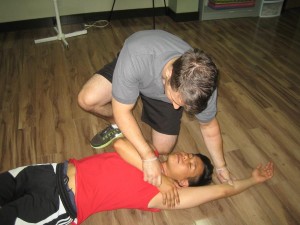Training in CPR/First Aid in Los Angeles is the best at Los Angeles CPR. We offer the widest variety of training programs to our students, variety in terms of topics and schedules. Basic and advanced courses are very popular among students from different disciplines, not just health care. Being trained in basic CPR means that you can manage different emergency situations, particularly cardiovascular emergencies.
Signing up for CPR training
Enrollment is a breeze if you choose to train with us a Los Angeles CPR. We aim to make our courses very accessible to students so we allow them to enroll through various ways. The most popular way to sign up is on the Los Angeles CPR website. We have an online application form that can be filled out at any time of the day (but will only be processed during normal business hours).
Other ways to sign up: e-mail, telephone (during business hours), in person (during business hours)
Key facts about CVDs (cardiovascular diseases)

Cardiac disease is a big problem in the United States and the entire world. In almost every country all over the globe, heart disease is the number one killer of both men and women. It is scary to think that a condition that is largely lifestyle-related kills so many people each year. In our training programs for CPR/first aid in Los Angeles, we emphasize the following facts:
- CVDs are the number one cause of death in the entire world. That means no other cause kills more people than CVD. Over 30 percent of global deaths can be accounted to CVDs.
- CVDs generally occur equally in men and women.
- About 80 percent of CVD-related deaths occur in low- and middle-income countries.
- By the year 2020, annual deaths attributed to heart disease can rise to as much as 23 million – a projection that still places CVDs as the number cause of global death.
- CVDs are largely preventable – meaning the risk factors that are associated with hem are typically lifestyle-related.
CVD risk factors
Changing lifestyle-related factors is one of the most important concepts we teach our trainees. While these kinds of factors are preventable, the act of making that change is incredibly difficult – because these factors are ingrained into a person’s life as habits.
- Unhealthy diet -A diet high in fat, cholesterol, and sodium greatly predisposes a person to hypertension (high blood pressure) and atherosclerosis (fatty deposits in the arteries clogging the vessels).
- Sedentary lifestyle – Mild to moderate exercise should be done at least three times a week, for at least 30 minutes. Without exercise, a person can become overweight/obese due to an increase in the deposit of fat in the body.
Los Angeles training courses
- Heartsaver CPR (general public)
- Heartsaver CPR C (health care providers)
- Basic Life Support for Health Care Providers
- Advanced Cardiac Life Support (ACLS) (health care professionals)
- Pediatric Advanced Life Support (PALS) (health care professionals)
The first three programs in the list are basic courses while the last two are advanced courses. We only have Heartsaver CPR (the first on the list) available towards the general public. The rest are for health care providers and professionals.
